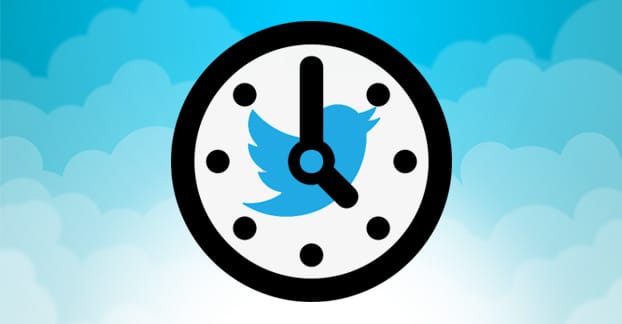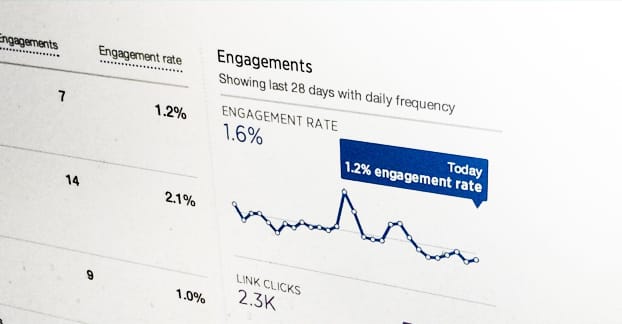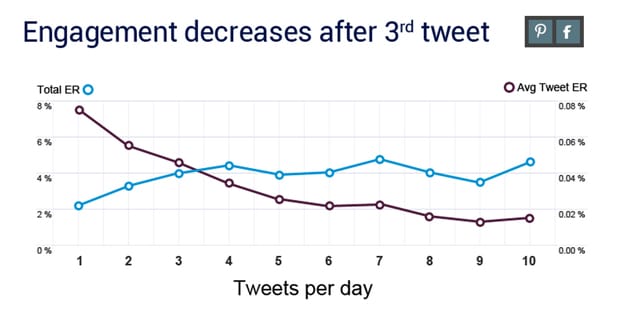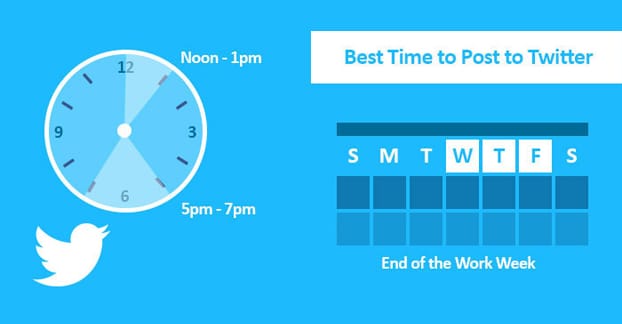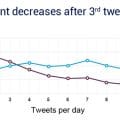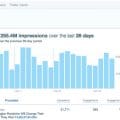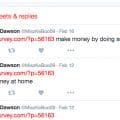In the last couple years, the idea of social media timing has come strongly into play. People want to know, not just whether or not they should use a social network, but how often they should post to any given network, and even what times of day they should post. Marketing companies have aggregated the data of thousands of clients and millions of followers to determine when people are in general most likely to be active, and thus when you are likely to get the most benefit from posting.
Now, the caveat here is that every audience is unique. You might be running a business that is outside the norm is some way or another. A nightclub isn’t going to have traditionally daytime viewers, they’re probably going to have a cluster of activity in the hours before they open or before a show, when people are checking to see what’s going on. That’s just one of many possible examples.
So, how often should you post to Twitter in a day or week? What times of day should you post? What sort of content should you be posting for the best effect?
Let’s take a look.
How Often You Should Post
Twitter is a site that has a very fast throughput on content. You post, people who view their feeds get to see it, and anyone who comes late to the party is going to have it pushed way down on their feeds by other, more recent content. At least, that’s the way it worked in the past, primarily.
Recently, Twitter introduced the filtered feed. It’s not quite so filtered as Facebook’s feed, but it’s still an engine that recommends content to you rather than just presenting you with the tweets that have been made since your last visit.
You’re probably familiar with this feed already. When you sign in to Twitter, have you seen the “While you were away…” pane at the top of your feed? Generally there will be one or two very recent messages, then a stash of a dozen tweets that happened throughout the hours since your previous logon, filtered roughly in accordance to your engagement with the people posting. People whose tweets you like, people whose profiles you visit, and people you @mention are all featured here.
The new Twitter filtered feed is basically that, all the time. It’s still making heavy use of chronology as a factor for what shows up when, though, so you won’t be seeing posts made days ago. You’ll always be shown recent content preferentially.
If you want to enable or disable the filtered feed, by the way, it’s pretty simple. Just click your profile picture in the corner, click settings, and scroll down to the content section. One of the options will be “show me the best Tweets first.” That’s your filtered feed. If the box is checked, you’re on the filtered feed; if it’s not, you’re not. I prefer the old-style timeline, but some people like it filtered. In fact, Twitter has made the filter the default, so if you’re not sure if you have it and you haven’t turned it off, you probably have it.
I bring all of this up because it’s actually not important as far as tweet volume is concerned. Tweeting a certain number of times per day is still the same as it used to be, at least until further studies can be performed. It’s just that you’re a little less likely to have every message read. Your best messages will float to the top, and your best users will see more of your content, while the people who don’t really care or engage at all will be left out.
It effectively streamlines your audience. Your content is shown to fewer people, but you have a larger chance of showing it to the people who really matter, like it was in the “while you were away” box. You aren’t likely to lose any exposure, you’re just going to have to deal with lower reach numbers in your analytics, if that’s your sort of thing.
So, back to the question at hand; how often should you actually post per day? As always, be sure to test this out on your own. Start at an “optimal” number and try increasing it, and see if you have any drop in engagement on those days or weeks. Try dropping it, and measure likewise. You’ll dial in the perfect frequency over time. However, be aware that frequency is also going to be a little variable.
For example, what if you’re livetweeting an event? If you’re posting 15-30 times in an hour, that’s not necessarily a bad thing. People will often tweet extra for special occasions or for longer messages they want to break up. There’s nothing wrong with this, and it works, so long as it’s not your only mode of posting.
To use a personal example, I have a friend who doesn’t seem to “get” Twitter. He’ll post long rants, one sentence at a time, for 30-40 tweets in a row. Then he won’t post anything at all for weeks at a time. It’s no surprise he has very few followers and no engagement on his posts. Thankfully, he’s not burning down a marketing brand doing this, so it’s not an issue for anyone other than himself.
Buffer is the brand behind most of the biggest studies into social media timing. They have access to a huge amount of anonymized client data, so they can make fairly accurate average measurements. Their analysis suggests that you should:
Limit Yourself to Three Tweets Per Day
If this seems low to you, well, it kind of is. Most people think five is a more comfortable number, and it is. Again, there’s nothing really wrong with posting more than three times per day; you just have to be aware that the 4th and later tweets will tend to have lower engagement compared to the first three, and that the more you post, and the more often you do it, the less you’re going to get in returns.
Buffer also notes that the engagement drop is slight. You might not necessarily even notice it through the ups and downs of normal posting. What’s +-10 likes if you average swings up or down of 250 from post to post? You would need to measure thousands of tweets over the course of months to notice those trends.
When During the Day You Should Post
So, if you’re posting around 3-5 times per day, what times during the day should you post?
Thankfully, this is where the filtered feed has you covered. The filtering means your posts will reach people who want to see them more often than they miss. If you post a little outside of the ideal times, you’re still going to be within that margin of error, which is generally around six hours or so, though I’ve seen it as much as 12. I don’t know what the precise limits are for Twitter; they keep their algorithm hidden, of course.
For this analysis, we turn from Buffer and go over to Hubspot. They are, of course, a similarly huge marketing brand with a lot of data to analyze. Keep in mind that any numbers anyone tells you here – Hubspot, Buffer, myself, or someone else – are going to be flexible. Test your audience and find out when they seem most engaged. I recommend picking a set of times for your tweets and shifting them up by a half hour at a time, and running with the new times for a week or so. Measure your engagement and see how it changes as you shift your schedule.
I personally suspect, though I don’t have the data on hand to back this up, that the filtered feed will be a bit of a balancer here, but typically only in the “posting too early” sense. If you post after someone has logged off for the evening, you’re not going to show up in their feed until, at best, the next day. The longer it has been since they were active, the less likely your tweets are to show up.
By contrast, if you post an hour before they log on, your tweet is there with a high time rank for the filtered feed, plus it’s recent enough that they could scroll back and see it in the unfiltered feed. That’s why I say, in general, to err on the side of too early.
The data Hubspot found indicates that weekdays are better times to post than weekends, which makes sense. A huge amount of the audience on Twitter comes from people working traditional 9-5 jobs, and they spend their weekends away from their computers, relaxing, dealing with family. They might be out on a beach or a lake, they might be on vacation, or they might just cut the cord, so to speak, for the weekends.
As for specific timing, every weekday their data found that the ideal times were between noon and 3 p.m. on those weekdays. This also makes sense; it’s the lunch break. When you post around that time – or as early as 11 a.m. if you’re erring on the side of earlier – you’re catching people when they’re taking their lunch breaks, out to eat for business lunches, or whatever else they do during the middle of the day.
There’s an additional “ideal” bump between 5 p.m. and 5 p.m. on Wednesdays. This is the “getting out of work” on the most potentially stressful day of the week, so it makes sense that people are trying to find their distractions then.
There are two major notes I need to make here. The first is relating to time zones. These numbers are normalized for the time zones of the posters and their audiences. That means I’m not telling you to post at noon EST, I’m telling you to post at noon for your audience. If you’re out in California, it’s noon PST. If you’re in Oklahoma, it’s noon CST.
The important point here is to recognize that it’s more important to post for the time zone of your audience, not your own personal time zone. If you’re a firm in California monitoring a business account in New York, you’re going to be wanting to post in EST, or New York time.
The second important point to mention is that this is predicated on your audience being, largely, people in corporate American culture. If you’re marketing primarily to, for example, freelancers, your numbers are going to be different. Artists, writers, and other creative types don’t necessarily work the 9-5 life, and so they don’t fit into nice neat columns on the calendar. If you’re marketing to corporate types, that’s fine, but if you’re marketing to the more “flexibly scheduled” folks out there. Be inclusive, is what I’m saying.
What Sort of Content You Should Post
There are different theories around about the kinds of content you should post. The one sure-fire rule to follow is that you shouldn’t be posting self-promotional material all the time. In fact, very little of what you post should be promotional in nature. For the most part, you’re going to be working to build a culture and a community around your brand, and you don’t achieve that goal by treating people as if they’re wallets with legs and Twitter accounts.
I like to think of tweets in groups of 10. If you’re posting at the high end, about 5 times per day, it works out for every two days in a cycle. It goes like this: out of 10 posts, 6 of then should be general interest posts. These are the routine sort of commentary on the world, mentions of what’s going on in life, and that sort of content. It’s not marketing, it’s just showing you’re aware and available, paying attention. This can also include curated content, which is how you’ll probably end up filling a lot of your posting, since it doubles as influencer marketing.
Of the remaining 4 posts, 3 of them should be more brand-direct. These are the posts about your spring sale, the posts about your new blog post, and so forth. They’re more “passive” marketing, drawing attention to your brand as a brand rather than as a social entity, but they aren’t being pushy.
That’s what the last 1 out of 10 posts is for. That one is your pushy sales post, it’s the one where you’re including a strong CTA to get people signed up on your mailing list, entering a contest, or otherwise
This is, of course, all flexible. You can switch things up and keep it organic, so long as you don’t stray too far in the way of self promotion. That’s the only thing that will consistently hurt you. Everything else is pretty much fair game.
